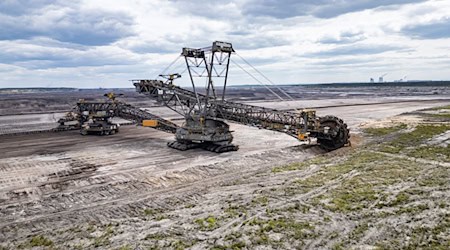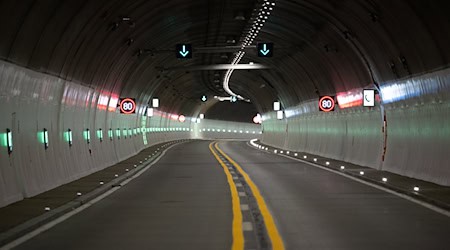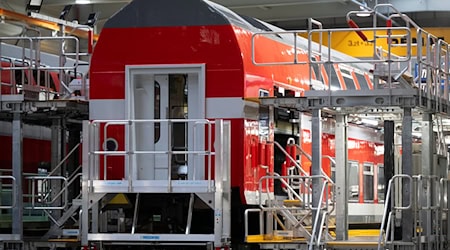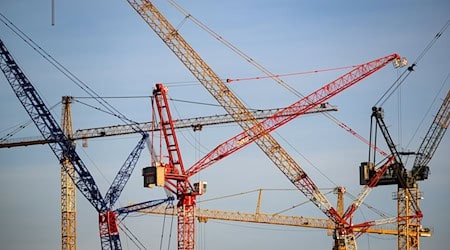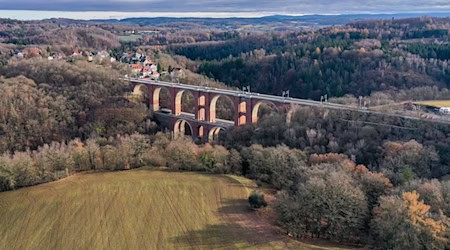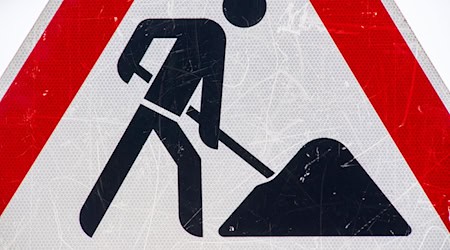Despite the bridge collapse in Dresden, road users can feel safe when crossing bridges throughout Germany - even if many bridges are in need of renovation. Every bridge must undergo a general inspection in accordance with DIN 1076 every six years. This is usually carried out while traffic is still moving and includes an inspection of all components. Three years later, a simple inspection is carried out. The results are documented.
The Head of Technology and Society at the Association of German Engineers, Dieter Westerkamp, considers this cycle to be sufficient. "In view of the low number of incidents involving around 130,000 bridges in Germany, this cycle seems to be proving its worth," he said.
Condition grades for bridges owned by the federal government
According to the Federal Ministry of Transport, almost 40,000 bridges alone are the responsibility of the federal government. The municipalities are responsible for a further 67,000 or so crossings, according to a study conducted by the German Institute of Urban Affairs in 2013. In addition, there are state-owned bridges.
Based on the bridge inspections, the Federal Highway Research Institute regularly collects information on the condition of federally owned structures. For each individual federal bridge, it awards a grade for very good structural conditions (1.0 to 1.4) through to unsatisfactory structural conditions (grades 3.5-4.0). It mainly refers to external, visible damage to the bridge. Cracks or the condition of the railings, for example, are included.
In the latest condition report, just under 2,300 of the approximately 40,000 bridges in the federal government received top marks of 1.0 to 1.4. Only around 200 structures were given unsatisfactory marks of between 3.5 and 4.0. This means that the majority of federal bridges are in a "good" or "satisfactory" condition.
"If an impairment of stability or traffic safety is identified during the structural inspection, appropriate measures will of course be taken immediately to continue to ensure the necessary safety," the report states.
Downward trend in load-bearing capacity
Another important indicator for bridges is the so-called load-bearing capacity index. This describes the structural capacity of a bridge, i.e. the extent to which it can withstand traffic loads. Here, too, there is a level system between I and V. This last level indicates that the structure will need to be replaced in the long term.
The classification here also comes from the Federal Highway Research Institute. It is noticeable that numerous structures, particularly in the west, have exceeded their lifespan. In general, experts are observing a downward trend in the load index in Germany.
Federal government has launched a package of measures
In particular, the closure of prominent highway bridges has forced the federal government to take action in recent years. The Rahmede freeway bridge on the Sauerland line, for example, made headlines when it had to be completely closed due to severe damage and has since been blown up. A new bridge is now planned.
In spring 2022, Transport Minister Volker Wissing (FDP) therefore announced a package of measures for faster bridge modernization. According to the package, 8,000 of around 28,000 freeway bridges would have to be modernized in the long term. 4,000 structures are to be repaired by 2032, the second half by 2042.
In addition, there are around 3,000 bridges in the federal road network that are in need of modernization and are the responsibility of the federal states. In January, the Federal Audit Office raised doubts as to whether the federal government's renovation schedule can be adhered to.
Municipalities also need refurbishment
There is also a need for refurbishment of the 67,000 or so bridges under municipal responsibility. Based on a survey of local authorities, the German Institute of Urban Affairs assumed in a report from last year that every second road bridge is not in good condition. This means that their condition is even worse than that of federal buildings. However, there is no central recording of the condition of bridges at state or municipal level.
Deutsche Bahn is also running a renovation program for bridges. In total, the infrastructure of the federally owned company includes around 25,700 such structures. Almost half of them are more than 100 years old. By 2029, Deutsche Bahn aims to have completely or partially renovated a total of 2,000 bridges. Between 2019 and 2029, the Group currently has a budget of around nine billion euros at its disposal.
Copyright 2024, dpa (www.dpa.de). All rights reserved


